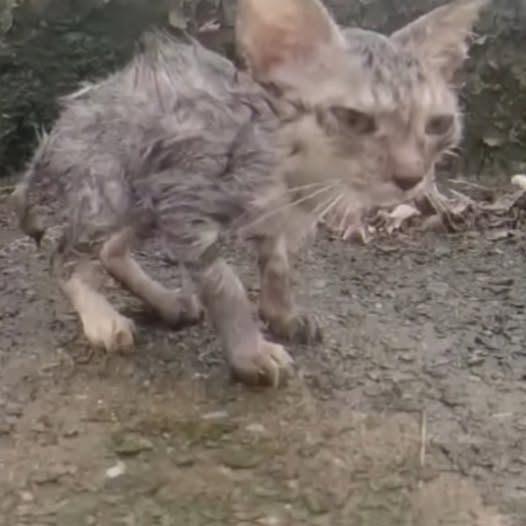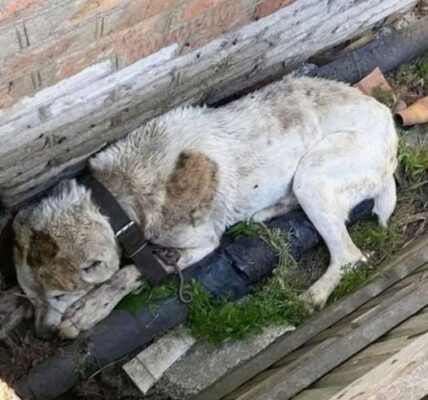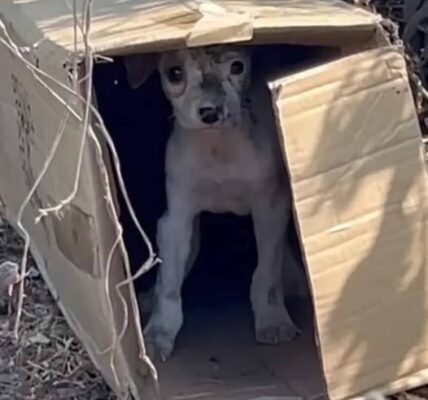Rescue the Starving Cats: A Journey from Suffering to Hope
At 11:14 AM +07 on Thursday, June 5, 2025, as the morning sunlight filters through the quiet alleys, the faint cries of starving cats echo like a silent plea for help. The images of these cats enduring hunger and abandonment serve as a heartbreaking reminder of the harsh reality faced by thousands of felines every day. A small gray cat, its wet and matted fur clinging to its frail body, struggles to walk on the dirty ground, its sunken eyes reflecting extreme exhaustion. An orange cat, covered in open wounds, lies motionless beside a peeling white wall, its tattered fur and sorrowful eyes begging for assistance. Another white-and-gray cat, with a deformed face but resting peacefully on a sofa, symbolizes a fragile hope after days of torment. These cats, teetering on the brink of death due to starvation and abuse, urgently need our intervention. This article explores the crisis of abandoned cats, the physical and emotional toll they endure, and the critical need for rescue efforts to give them a chance at life.

The Tragedy of Abandoned Cats
Abandonment is a cruel fate for any living being, but for cats—creatures cherished as symbols of elegance and independence—it is a profound betrayal. The small gray cat in the first image, with its wet and tangled fur, stumbles across the filthy ground with trembling legs, a vivid testament to prolonged starvation. Its matted coat and emaciated frame suggest it has gone without adequate food for days, if not weeks. Veterinary experts note that such severe malnutrition forces a cat’s body to consume its own fat and muscle reserves, risking organ failure if not addressed promptly. Cats like this are often left behind when their owners can no longer care for them, move away, or lack the means to provide support. Animal shelters worldwide are overwhelmed with similar cases, while thousands more roam the streets, invisible to the passing public.
The orange cat in the second image tells a different yet equally heartbreaking story. Lying motionless beside a peeling white wall, its body bears open wounds, its torn fur and sunken eyes revealing utter exhaustion. These injuries could stem from an attack by another animal, an accident, or even intentional abuse. The untreated wounds indicate that this cat has been abandoned in a dangerous environment, devoid of the medical care it desperately needs. Such cats are often forgotten, left to suffer in the shadows of indifference as they struggle to survive their injuries and neglect.
The white-and-gray cat in the final image offers a glimmer of fragile hope. With a deformed face—possibly due to trauma or a congenital condition—this cat rests peacefully on a sofa, a sign that it has been brought to safety. However, the journey to this point must have been arduous. Cats with unusual appearances are often judged and abandoned, facing isolation before rescue. Its presence on the sofa is evidence of the efforts of kind-hearted individuals, yet it also serves as a reminder that thousands of other cats are still waiting for help.
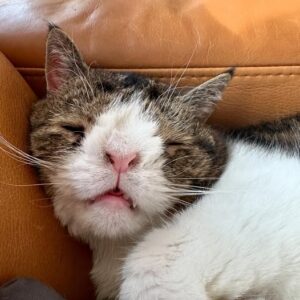
The Physical Toll of Starvation and Abuse
Starvation is a devastating process for a cat’s body. For the small gray cat, the lack of nutrition has driven it into a state of extreme exhaustion. Its wet, matted fur and frail legs indicate it has not received enough food to sustain its health. When deprived of nourishment, a cat’s body begins to break down fat reserves, and once those are depleted, it turns to muscle and vital organs like the liver and kidneys. Veterinary studies warn that cats in this condition face a high risk of multi-organ failure, especially without immediate intervention. The cat’s labored gait reflects the daily exhaustion and pain it endures.
The orange cat with open wounds faces additional challenges. The untreated injuries on its body pose a high risk of infection, particularly as its immune system is weakened by starvation. Its tattered fur and emaciated frame suggest not only a lack of food but also neglect in basic hygiene care. Infections from open wounds can lead to sepsis, a life-threatening condition if not addressed within 24-48 hours. The cat’s immobility is a clear sign of exhaustion, necessitating urgent care to prevent fatal consequences.
The white-and-gray cat with a deformed face, though resting, bears the marks of long-term suffering. Its facial deformity may impair its ability to eat, making nutrition even harder to maintain. Despite being on a sofa, its frail body indicates it requires extensive time to recover both physically and mentally after days of abandonment.
The Emotional Scars of Neglect
Beyond physical wounds, these cats carry deep emotional scars. Cats, though often seen as independent, rely on human interaction and a sense of security for their mental well-being. The small gray cat, with its sunken eyes and hunched posture, may have endured prolonged isolation, leading to depression or a loss of the natural curiosity typical of felines. Starvation is not just a physical ordeal but also a psychological shock, causing this cat to become wary and fearful of humans.
The orange cat with open wounds may have suffered both physical and emotional trauma. If its injuries resulted from abuse, it could have developed an intense fear of humans, leading to aggression or withdrawal when approached. Its immobility is not only a sign of physical exhaustion but also a surrender of hope, a common response in animals subjected to prolonged mistreatment.
The white-and-gray cat, despite resting peacefully, may have faced judgment and abandonment due to its unusual appearance. Cats with disabilities are often deemed “unlovable,” leading to neglect or harsh treatment. However, its closed eyes and relaxed posture on the sofa suggest the beginning of emotional recovery, thanks to the care of rescuers.
The Urgency of Rescue
Time is running out for these cats. The small gray cat may have only days before organ failure becomes irreversible. The open wounds of the orange cat risk severe infection, potentially leading to death if untreated within 24-48 hours. Even the white-and-gray cat, now in a safe place, requires ongoing medical monitoring to prevent complications from its weakened state. Animal rescue organizations are working tirelessly, but they are often limited by resources and the sheer number of animals in need. Volunteers, donations, and community awareness are key to expanding rescue efforts.
Rescue begins with removing these cats from dangerous environments. The gray cat needs to be taken to a veterinary clinic for emergency hydration and feeding, done gradually to avoid refeeding syndrome—a potentially fatal condition caused by sudden nutrient intake after starvation. The orange cat requires wound cleaning, possible stitching, and antibiotics to prevent infection. The white-and-gray cat needs a comprehensive health check, including nutritional support and assistance for its deformed face.
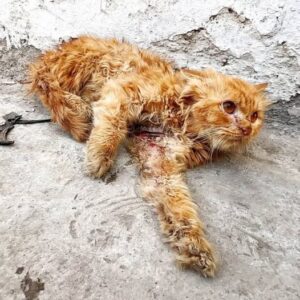
Steps Toward Recovery
Recovery is a process that demands patience and expertise. Veterinary care is the first step, involving tests to assess organ damage, followed by tailored treatment plans. The gray cat needs specialized wet food, starting with small portions and gradually increasing to restore its health. The orange cat may require surgery for severe wounds, along with pain relief and antibiotics. The white-and-gray cat may need a special diet to support its facial structure, along with gentle physical therapy to improve mobility.
Emotionally, these cats need a safe and loving environment. Foster homes can provide a space for them to rebuild trust, while activities like playing with toys or gentle petting help them overcome fear. Permanent adoption should occur only when they are fully healthy, ensuring a long-term, happy future.
The Role of the Community
Rescue cannot succeed with just a few individuals. Communities must support shelters with donations of food, medical supplies, and funds. Awareness campaigns, using these images, can educate the public on recognizing neglect and offering help. Stricter laws against animal abuse and pet ownership regulations will help reduce similar cases in the future.
A Call to Action
At 11:14 AM +07 on June 5, 2025, take action. Contact local rescue organizations, volunteer your time, or share this story to inspire others. Every small step brings these cats closer to a life free from hunger and pain. Their resilience deserves our compassion, and their recovery is a testament to what we can achieve together.
Watch more:
